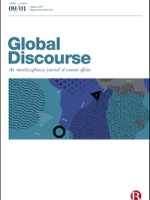Sectarianism as a driver of conflict
The conflict in Yemen is sometimes presented as an example of a sectarian conflict in the Middle East today. At the domestic level, the conflict is typically seen as one which pits Shia Muslims, in the form of the Zaydi Houthi movement, against its Sunni Muslim antagonists in the form of the deposed but internationally-recognised president Abd Rabbo Mansour Hadi and his supporters. At the regional level the conflict is presented as a proxy war between Iran, the sponsors of the Houthis, and Sunni Muslim powers, led by Saudi Arabia, and the United Arab Emirates (UAE) who in 2015 intervened with the objective of restoring Hadi to power.
In this article ‘Sectarianisation of a multidimensional conflict: a reply to Durac’ Maria-Louise Clausen discusses the usefulness of a sectarian approach to understanding and explaining the trajectory of the conflict in Yemen. The article argues that the conceptual, theoretical and empirical usefulness of sectarianism as an analytical category should be developed. This is done through an analysis that highlights that a rigid focus on the sectarian aspect of the conflict in Yemen obfuscates as much as it enlightens as it reduces a complex conflict to a simple binary. The article underscores the need for analysis that combines theoretical rigor with deep understanding of local dynamics as well as how local dynamics interact with regional and international dynamics.
DIIS Experts


